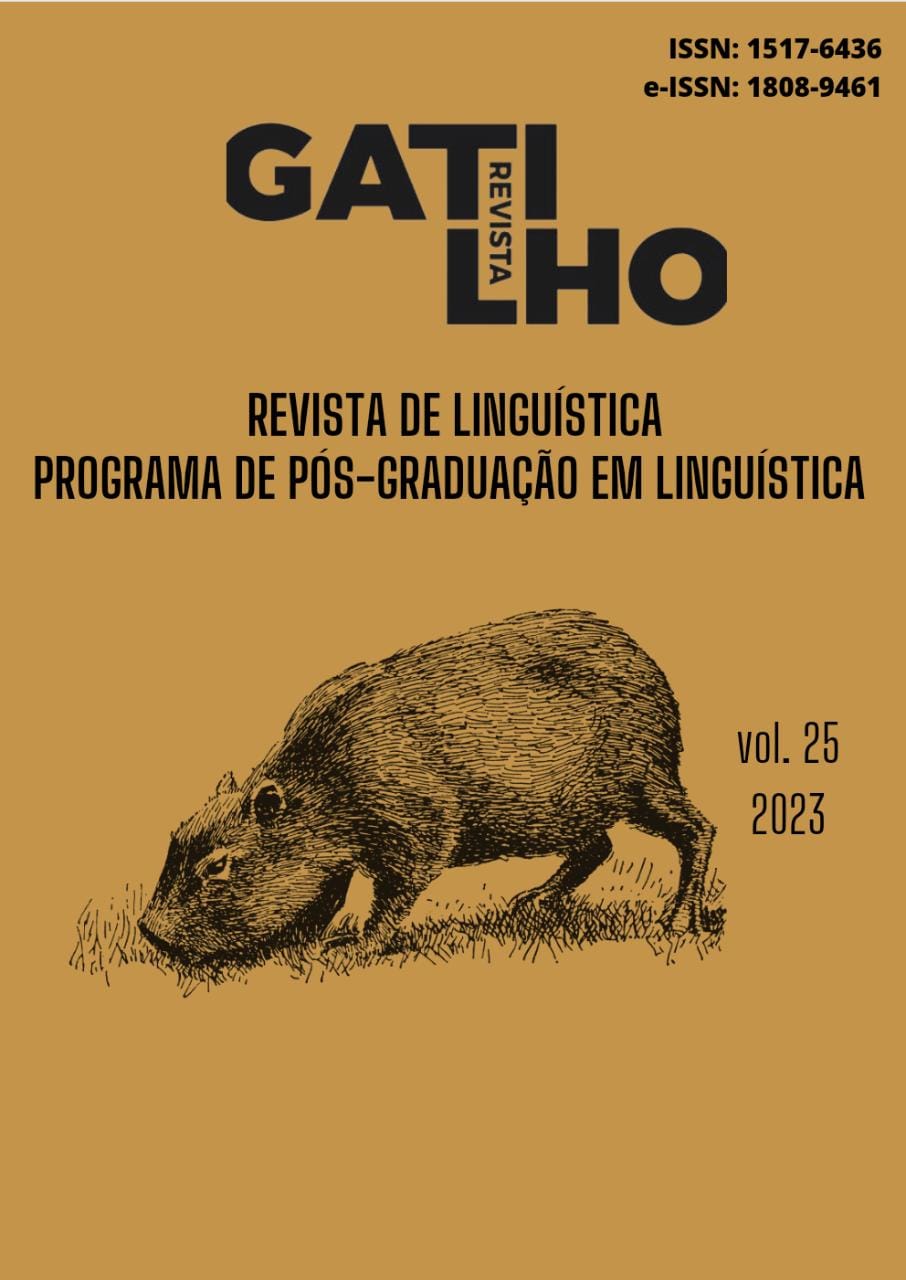Análise de chamada televisiva:
multimodalidade e metafunções da linguagem
DOI:
https://doi.org/10.34019/1808-9461.2023.v25.40135Keywords:
Gramática do design visual, Metafunções da linguagem, Multimodalidade, Semiótica Social, Chamada televisivaAbstract
This paper aims to analyze the categories of the three metafunctions present in the work "Reading Images: The Grammar of Visual Design", by Kress and van Leeuwen (1996, 2006), the representational, interactive and compositional ones, from the perspective of multimodality (KRESS, 2010; VAN LEEUWEN, 2011; LIMA-LOPES, 2012; RAMOS; CARMELINO, 2014; KNOLL; FUZER, 2019), in a television spot with the purpose of relating the sign modes with the social value they bring, in addition to observing the extent to which the different signs are articulated, explaining the possible effects of meaning from the integration of verbal-visual elements, paying attention to these elements, to the socio-historical context and to the communicative purpose of the genre under discussion. To this end, it is proposed to analyze the TV spot for the special editions of the 2020 retrospective of Jornal da Cultura from the notes of the correlation of different semiotic systems of multimodal productions in motion using the ELAN software (SLOETJES; WITTENBURG, 2008), a professional tool that enables the creation of complex annotations in digital audio and video files, with the aim of understanding the strategies of how the various resources are used for the construction of meaning. This research concludes, therefore, that the TV spot analyzed is a very productive audiovisual text that made it possible to provide visibility to the way in which the different modes of language are combined in order to build meaning in multimodal texts, allowing to thoroughly observe the direct relationship between studies of multimodality and those of a linguistic nature, corroborating the Social Semiotics theory of verb-visuality.





